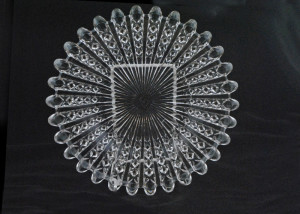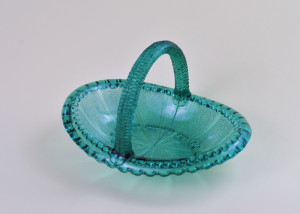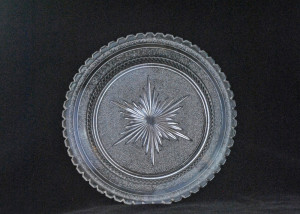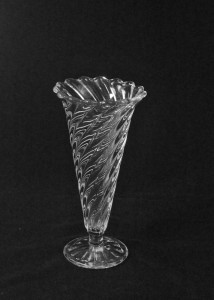The firm was first established by John Sowerby in 1847 as the Gateshead Stamped Glass Works, but closed in 1848.
In 1850 John Sowerby and Samuel Neville set up as “Sowerby & Neville, Gateshead- on-Tyne”. They leased land from Cuthbert Ellison, and in 1864 bought the land outright. They continued under the name of Sowerby & Neville until 1871, when Neville left to set up his own firm, and Sowerby & Co became a family business again.
In 1882 it became a limited company, Sowerby’s Ellison Glass Works Ltd.
John Sowerby died in 1879 and his son George Sowerby took over. By 1889, the firm had showrooms in Paris, Brussels and Hamburg.
In 1877 vitro-porcelain appeared. This is composed of cryolite (a compound of hydric fluoride, water, and sodic and aluminic oxides). Using 4 parts cryolite to one of zinc oxide and ten of sand gives a milk-white opal. If more cryolite is used, an opaque substance like glazed porcelain is produced. The colours included a white called Opal, a blue called Turquoise, and an ivory called Patent Queen’s Ivory Ware. The latter was patented in 1878.
In 1877, a range of vitro-porcelain designs were produced featuring nursery rhymes and other designs by Walter Crane, e.g. peacocks, irises, rushes, daisies, frogs etc.
By 1880, there were other colours including Malachite, Aesthetic green, Giallo (yellow) Gold and Blue nugget. In 1880 there was “Blanc de Lait”. an opalescent milky colour verging on sky blue in thinner places, but when held up to the light shines like opal and gold. By 1882 there was Tortoiseshell, Rubine (deep red translucent), New marble glass (like brown malachite). “Slag” glass appeared black by reflected light, but bottle green or dark purple by transmitted light. This was superseded by a dense black opaque glass called Jet.
In 1881 Sowerby’s developed the idea of pressing inside the item with a corrugated plunger
In 1887 there was a pressed glass commemorative plate and bowl with a medallion portrait of Queen Victoria to celebrate the Golden Jubilee. It was used again in 1897 for the Diamond Jubilee.
John George Sowerby died in 1914, but the firm remained in existence until 1972, and was demolished in 1982.
Trademark:
A peacock’s head, used from 1875-1930.







